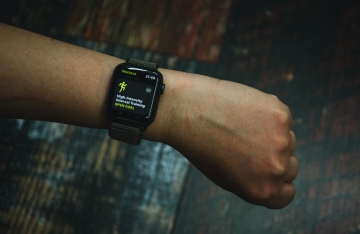Skin blister or also known as cutaneous blister is a common condition that can affect individuals of any age group. Skin blisters can affect even newborns and infants. Detection of the exact cause of skin blisters in an individual is very important as different causes have different treatments. Some of the causes are autoimmune diseases, infections, and physical injury. Ask questions to doctor online to have a better understanding of skin blisters. You will usually get blisters from too much friction between something hard and your skin. You will often find blisters to appear on your feet and hands, and they can hurt sometimes. If you don’t like having pain throughout your day, then you should ideally try to avoid blisters. There are many types of blisters that you could get as well but for the most part, you can treat them the same.
Skin blisters are widely classified based on their distribution into generalized skin blisters or localized skin blisters. Localized skin blisters are subdivided into:
- Hands and feet
- Linear
- Dependent areas
- Grouped
- Photo distributed
- Dermatomal
On the other hand, generalized skin blisters are subdivided into:
- Tense lesion
- Flaccid lesion or skin sloughing
- Vesicles
The causes for localized hands and feet skin blisters are:
- Acute eczema
- Dermatophytosis
- Friction blisters
- Sucking blisters
- Erythema multiforme
- Epidermolysis bullosa simplex
Acute hands and feet eczema is characterized by the presence of skin blisters and skin lesions which are intensely itchy. The soles of the feet, the palm of the hands, fingers, and toes are the common sites that are affected by this condition. Dermatophytosis or tinea pedis is a condition where the skin lesions are blistering. Dermatophytosis is caused by Trichophyton mentagrophytes or Epidermophyton floccosum infection. Friction blisters are skin blisters that are caused by an injury that caused separation within the epidermis. Too tight footwear can create even more cleaning when your foot may need to push in and out of the pump during certain motions, like going up on your toes. Sucking blisters are skin lesions which affect newborn as a result of toes and fingers sucking while inside the womb. Erythema multiforme is characterized by the presence of target lesions. Target lesions may form central blisters.
The causes of localized linear skin blisters are:
- Contact dermatitis
- Phytophotodermatitis
- Friction blisters
The causes for localized dependent areas skin blisters are:
- Coma blisters
- The bullous disease of diabetes
- Edema blisters
The causes of localized grouped skin blisters are:
- Herpes simplex virus infection
- Herpes zoster virus infection
- Mild dermatitis herpetiformis
The causes of localized photo distributed skin blisters are:
- Polymorphous light eruption
- Blistering porphyrias
- Pseudoporphyria
- Sunburn
- Phototoxic reaction
The cause for localized dermatomal skin blisters is:
- Herpes zoster virus infection
The causes for generalized tense skin blisters are:
- Bullous pemphigoid
- Mucous membrane pemphigoid
- Linear IgA bullous dermatosis
- Epidermolysis bullosa acquisita
- Bullous systemic lupus erythematosus
- Dermatitis herpetiformis
- Paraneoplastic pemphigus
- Pemphigoid gestationis
The causes for generalized flaccid skin blisters are:
- Stevens-Johnson syndrome
- Toxic epidermal necrolysis
- Staphylococcal scalded skin syndrome
- Pemphigus Vulgaris
- Pemphigus foliaceus
- Paraneoplastic pemphigus
The causes for generalized vesicular skin blisters are:
- Miliaria crystallina
- Pemphigus foliaceus
- Dermatitis herpetiformis
- Disseminated Herpes simplex virus infection
- Disseminated Varicella-zoster virus infection
- Sweet syndrome
Skin blisters are skin lesions in which the skin lesions are filled with fluid as a result of acantholysis (no more adhesion between epidermal cells), spongiosis (edema between the cells of the epidermis), and separation of dermis and epidermis. Vesicles are skin lesions that are less than 1cm in diameter, while bullae are skin lesions that are more than 1cm in diameter. Skin blisters contain clear fluid and this differentiates them from pustules as pustules contain cloudy and yellowish fluid.
Skin blisters are usually self-limiting, but some are life-threatening. The life-threatening skin blisters are:
- Toxic epidermal necrolysis
- Staphylococcal scalded skin syndrome
- Purpura fulminans
- Disseminated herpes simplex
- Herpes zoster infection in immunocompromised patients
Ask questions to doctor online to have a better understanding of skin blisters. Do not hesitate as most of the causes of skin blisters are curable.




